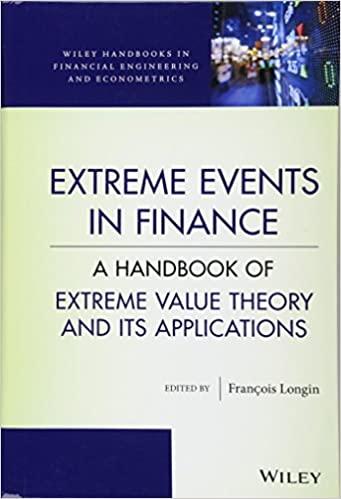Answered step by step
Verified Expert Solution
Question
1 Approved Answer
Assume that a risky portfolio has an expected return of 1 5 % and standard deviation of 2 0 % , whereas the risk -
Assume that a risky portfolio has an expected return of and standard deviation of whereas the riskfree asset has a return of Further, suppose that the borrowing rate that your client faces is Also, suppose your client has a risk aversion parameter, A
a Draw the CAL.
b What is the rewardtovolatility ratio in the lending range? What is the reward tovolatility ratio in the borrowing range? Which one is higher, and why?
c Suppose your client initially has all her money invested in a riskfree asset. What is the required rate of return for her to stay on the same indifference curve while taking on an investment with a standard deviation of
d Draw the indifference curve where U for this investor. Label at least points on the indifference curve.
e What is the optimal capital allocation to the risky asset for this investor?
Step by Step Solution
There are 3 Steps involved in it
Step: 1

Get Instant Access to Expert-Tailored Solutions
See step-by-step solutions with expert insights and AI powered tools for academic success
Step: 2

Step: 3

Ace Your Homework with AI
Get the answers you need in no time with our AI-driven, step-by-step assistance
Get Started


